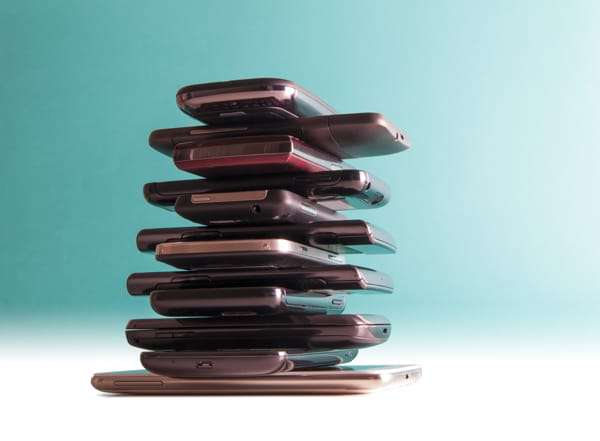What happens to all the toxic junk from our smartphones?

Just about everyone has a mobile phone, and hundreds of millions are manufactured and sold every year. Despite society as a whole becoming more aware of the issues of electronic waste, and other environmental concerns, that doesn’t stop the vast majority of the components used in our phones becoming landfill. what’s worse, lots of that e-waste is never recycled and ends up poisoning the groundwater and environment in developing nations, where it ends up as junk.
If you look at companies such as Apple, of course they already have green programmes in place, and the majority of the power the company uses comes from solar, wind and other green power sources. However, you can’t control the whole manufacturing chain, no matter how big a company you are, so it’s up to us consumers to also consider how we’re affecting the planet..
E-Waste a growing problem
Our addiction to smartphones and other gadgets has created a thriving industry, but while it lines the pockets of tech companies, mobile operators and governments, it’s having a devastating affect on our environment. Bought a new phone? What did you do with the old one? If you threw it away you’re contributing to the electronic waste piling up in landfills. And due to the proliferation of mobiles, they’re currently the worst culprits, followed by computers.
It’s estimated that the world generates 50 million tons of e-waste, and that figure will rise to 65 million by 2017 – that’s the same size as 8 Egyptian pyramids of tangled wires, microchips, metal and plastics.
Toxins in mobile phones have a huge impact on human health. According to e-cycle.com, when mobiles end up as landfill, the toxins inside (such as lead, mercury, arsenic, cadmium, chlorine and bromine) leak into the groundwater and accumulate in the food chain.
Toxins found in smartphones
Here’s a quick summary of the effects of some of the more common substances:
Lead is found in a wide variety of cell phone components including the circuit boards, batteries and as a stabilizer in PVC products. Lead exposure can cause damage to the reproductive, blood and nervous systems.
Mercury is used in the cell phone’s battery, crystal displays and circuit boards. A single cell phone contains up to 2 grams of mercury. Mercury exposure contributes to brain and kidney damage.
Arsenic is found in the microchips of many electronic devices including mobile phones. In high doses, arsenic poisoning is lethal. Low levels of exposure cause negative impacts on skin, liver, nervous and respiratory systems.
Cadmium is used in the battery of a cell phone. It is associated with deficits in cognition, learning, behavior and neuromotor skills in children. It has also been linked to kidney damage.
Chlorine is a component of plastics used in cell phones, specifically polyvinyl chloride (PVC). PVC makes up about 30% of the cell phone. Exposure to improperly disposed chlorine causes tissue damage and the destruction of cell structure.
Bromine is a component in a group of fire retardant chemicals known as brominated flame retardants. It is associated with cognitive and developmental deficits. Studies have shown that bromine contributes to the disruption in the thyroid hormone balance, brain damage and cancer.
But you might be surprised to learn who the worst nations are in terms of e-waste – in 2014 it was Norway with 62.4 pounds per person, closely followed by Switzerland, Iceland and Denmark. The UK came in 5th in terms of per capita e-waste:

In terms of the actual volume however, back in 2012 the picture looked like this (the data is a few years old, but you get the idea):

So, what’s the solution? There are of course recycling schemes, companies and charities that will recycle and reuse your old gadgets, not just smartphones. There are also dozens of resources online that suggest how to dispose of your gear properly.
If you submit your e-waste to the right recycling program, you’re also providing a boost to the economy – studies conducted by the International Data Corporation discovered that e-waste recycling basically sustained 30,000 full-time jobs and $5.2 billion in the US since 2002. Those numbers will surely increase, as more and more people are replacing phones every 22 months and computers every 2 years…
However, of course you already knew that the sensible option is to recycle, re-use, or re-purpose those gadgets. Our advice is to take a moment to think about whether you really do need that new mobile, smartwatch or computer. And if you really do, at least try and make sure it doesn’t get thrown in the bin when you feel it’s time to upgrade…





